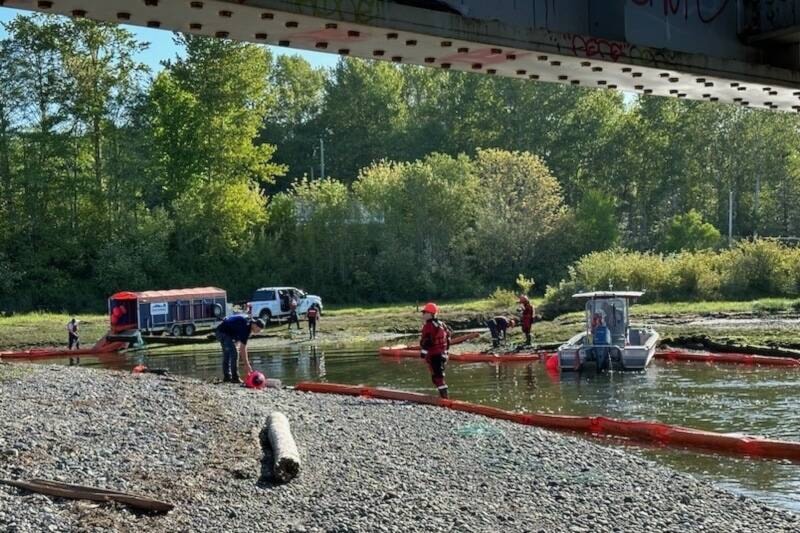Although there was some concern in at least one community Facebook group about an oil spill last week, due to photos of a truck labeled “spill response” that could be seen in the parking lot behind Washington Avenue Grill, it was all planned.
The May 11 staged scenario – which had two rail cars transporting crude oil “derail” in front of Semiahmoo Park – was part of an emergency management exercise conducted by Burlington Northern Santa Fe (BNSF), the American railroad company that owns the section of tracks from the Peace Arch border into New Westminster, and involved the City and Semiahmoo First Nations representatives, as well as provincial and federal organizations.
“It was to simulate a response to an oil spill basically in front of Semiahmoo Park,” said White Rock Fire Rescue chief Ed Wolfe.
“There were two spill sites – one directly in front of the parking lot, and the other, a little further down, in front of the Little Campbell (River).”
The exercise, which BNSF is mandated to run periodically, had two objectives, Wolfe said, the first mainly being ensuring that all organizations involved understand who is responsible for what, and communicate effectively.
READ ALSO: Container ship spills 60-100 litres of fuel near Vancouver’s English Bay
“Our goal was to ensure that all jurisdictions were able to integrate, form a unified command, and make decision related to the incident,” Wolfe explained.
“It’s pretty complex when there’s multiple different agencies involved in an incident like this – you’ve got local, regional, provincial and federal response organizations that would make up unified command in a situation like this… there’s jurisdictional issues with federal, provincial and First Nations being involved and you’ve got Transport Canada and BNSF.”
The first part was a practical session deploying Oil Spill Response Operations called OSRO, with personnel and equipment from Canada and the U.S. involved in setting up booms in two places. This is to contain a potential oil spill from a flipped rail car from further entering the ocean, while booming set up in front of the Little Campbell River was to prevent oil from moving into and up the river via high tide, Wolfe said.
The second part of the exercise was a table talk and walk-through of the entire exercise at White Rock Community Centre.
“It went very smoothly. There was a lot of positive feedback and the groups worked well together,” Wolfe said.
“We were all able to be present and organize in a fashion where we were successful in resolving the incident.”
@Canucklehedd
tricia.weel@peacearchnews.com
Like us on Facebook and follow us on Twitter.
